Picture
Your Present Location: HOME> PictureRDCY hosted Canton Fair International Trade Development Forum 2019
On Oct. 16th, with the theme of “Embracing the New Era of Economy and Trade”, Canton Fair International Trade Development Forum 2019 was held in Guangzhou. It sponsored by China foreign trade center and organized by Chongyang Institute for Financial Studies, Renmin University of China (RDCY). More than 400 representatives from global think tanks, finance, commerce, trade and other fields gathered to discuss new business forms and opportunities in international finance and trade. The forum was presided over by Guan Zhaoyu, the researcher fellow of RDCY.
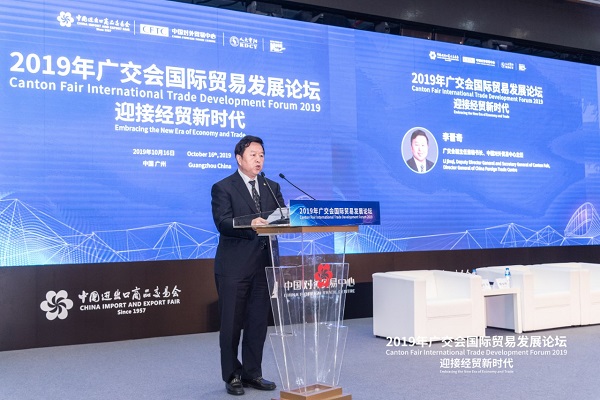
Li Jinqi, the vice-director and secretary-general of Canton Fair, and the director of China Foreign Trade Center, said in his speech that for more than 60 years, Canton Fair, as one of the multi-functional comprehensive platforms for China's all-round opening up to the outside world, has been committed to creating a win-win situation for the global economic and trades. It is hoped that we can help business friends here deepening their understanding of the current trend of international market. We can also help enterprises to explore international markets, continue to create the role of first promotion platform for China’s foreign trade, so as to grasp the future prospects of China's opportunities.
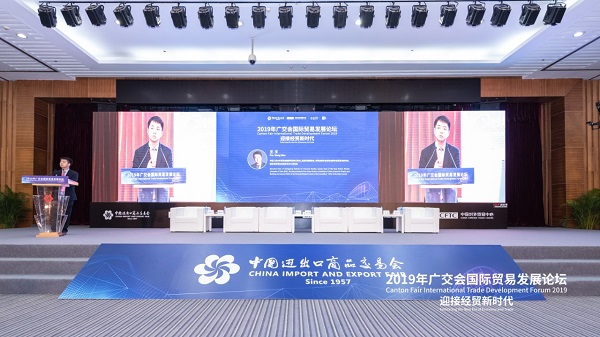
Wang Wen, the Executive Dean of RDCY, demonstrated that China is undergoing "three great transformations" in global trade. First, China's manufacturing, consumer market and purchasing power are becoming stronger. Second, China is gradually becoming a net exporter of capital from the past "importer" to "exporter" of the capital. Third, under the "Belt and Road" initiative, China has brought win-win corporations to the world with continuous “going-out” capacity. Despite of these three great transformations and Unprecedented Great Changes in Global Trade for Centuries, China should not be arrogant or impetuous, and should take a steady and solid approach to becoming a great major. China should also to innovate and introduce new technologies and achievements. At the same time, we should have full confidence in China's future, seize opportunities and meet challenges in the great challenges. Mr. Wang also believes that the Canton Fair is one of China's efforts to promote an open, inclusive, balanced and win-win economic globalization, whose background is the existing global economic uncertainty and the rising regional anti-globalization.
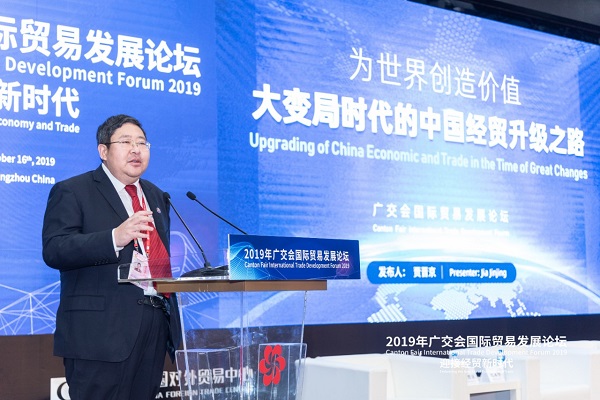
During Theme Release, Jia Jinjing, the Assistant to the Dean and the Director of Macro Research Department of RDCY, released a special report " Sharing the Treasure Island—Upgrading of China Economiy and Trade in the Time of Great Changes”. This report analyzed the general trend and new opportunities in the current international economic and trade reform from multiple dimensions. It provided an accurate navigation for Chinese enterprises to "going-out". Mr. Jia argued that the world has entered the era of negative interest rates, and the relationship between currency and assets has undergone great changes. The causing reason is that the US dollar, Euro, Japanese Yen etc., are over issued in the last decade since the outbreak of the global financial crisis. Currency is firstly to purchase assets rather than consumer goods, while assets are assessed more valued than currency. Meanwhile, the rising of 5G technology is also rewriting traditional economic activities. This is an opportunity as well as a challenge for Chinese enterprises. The Canton Fair provides a great opportunity for Chinese enterprises to transform and upgrade from "Made in China" toward "Innovated in China" and "Designed in China".
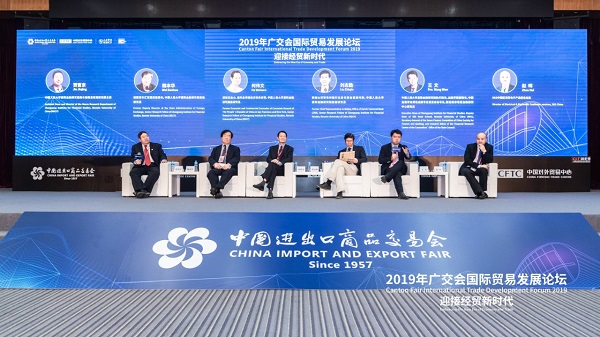
During the Round Table Dialogue, Mr. Wei Benhua, a former Deputy Administrator of the State Administration of Foreign Exchange and the senior fellow of RDCY, Mr. He Weiwen, the former Economic and Commercial Counselor, Chinese Consulate General in San Francisco and New York, and the senior fellow of RDCY, Mr. Liu Zhiqin, the former Chief Representative of (Swiss) Zuercher Kantonal bank and the senior fellow of RDCY, and Mr. Zhao Hui, the Director of SGS Consumer Electronics Division China, discussed about themes of “Challenges and Opportunities for China in the China-U.S. trade frictions”, “How can Chinese exporters enterprises accurately target developing markets?” etc.
Wei Benhua mentioned that the IMF recently lowered its forecast for economic growth in 2019 by 0.2 percentages in its Autumn World Economic Outlook report. It is predicted that the world economic growth rate will be only 3% this year, the lowest since 2008. China has been highly integrated into the world economy, and the development of China's economy is inevitably affected by the external environment. The current severe external economic environment will have an impact on China's economic growth and trade activities, which constitutes a challenge that the Chinese economy must confront. At the same time, this is also a historic juncture for China to vigorously promote the transformation and upgrading of foreign trade products, develop high-tech industries, and promote the further development of foreign trade. Facts have proved that Sino-US trade friction has had certain impacts on China's foreign trade, but China's foreign trade in the first three quarters of this year has maintained a high growth rate, and the “Belt and Road Initiative” has made great contributions to the growth of foreign trade.
He Weiwen believed that the direct result of the Sino-US trade war, which the United States would be gradually marginalized in China's foreign trade allocation. The EU and ASEAN have replaced the United States as China's top two trading partners. At present, China-US economic and trade talks have made substantial progress, but China still has to be cautiously optimistic about the improvement of Sino-US trade relations. The full expectations of the long-term and difficult nature of this issue should be kept by the Chinese side. At the same time, we should also have sufficient confidence in the future of China's foreign trade. In the first nine months of this year, China’s exports to ASEAN and EU countries increased by more than 440 billion Yuan, which far exceeds the reduction of China’s exports to the United States. Therefore, China does not need to worry too much about its export concerning the Sino-US trade frictions, but should rather be committed to using the “Belt and Road” initiative to further open up the Eurasia market.
Liu Zhiqin said that in the past ten years, the China Import and Export Fair has not only promoted large-scale commodity transactions, but also established a platform for mutual understanding and cooperation between Chinese and foreign entrepreneurs and businessmen, and made great contributions to China's further opening up of the market and the promotion of economic and trade cooperation. The spiritual core of the China Import and Export Fair is persistence, innovation and sustainability. It is with the support of such a spirit that the China Import and Export Fair have been able to get better and better and continue to develop.
Zhao Hui pointed out that from the perspective of a global multinational enterprise, whether China's foreign trade industry can seize opportunities in the context of the global economic downturn depends on if product quality can be further improved. With the improvement of technical requirements and the access system, the advantages of low-quality products in export will not be dominant. At the same time, high-quality product requirements can also drive China's manufacturing industry to transfer from labor-intensive to technology-intensive, thus occupying the leading position in global commodity competition in the future.
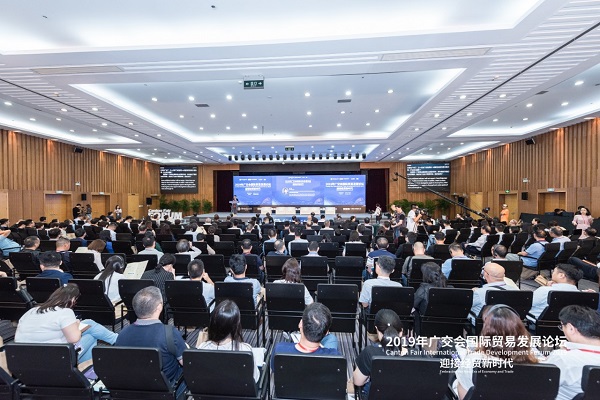
All of the participants believed that China, as the world's second-largest economy, has a sound resilience, great potential and strong vitality, which will add "certainty" to the uncertain world economy. The Canton fair, which has been going on for more than sixty years, has released a positive signal to reduce risks and uncertainties in the world economy.
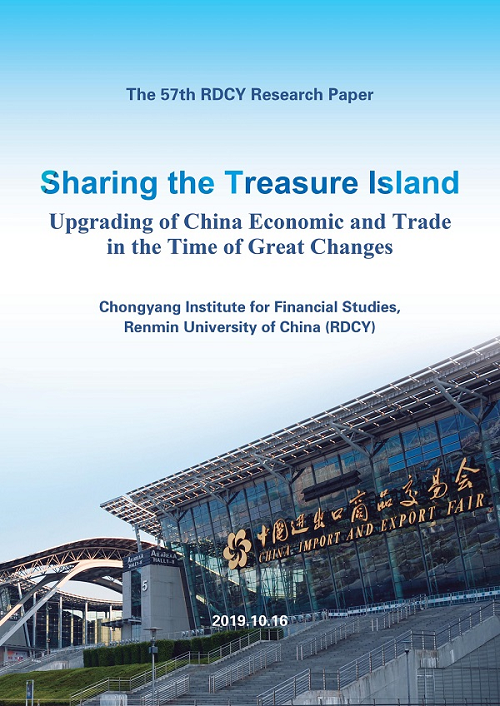























































































 京公网安备 11010802037854号
京公网安备 11010802037854号





